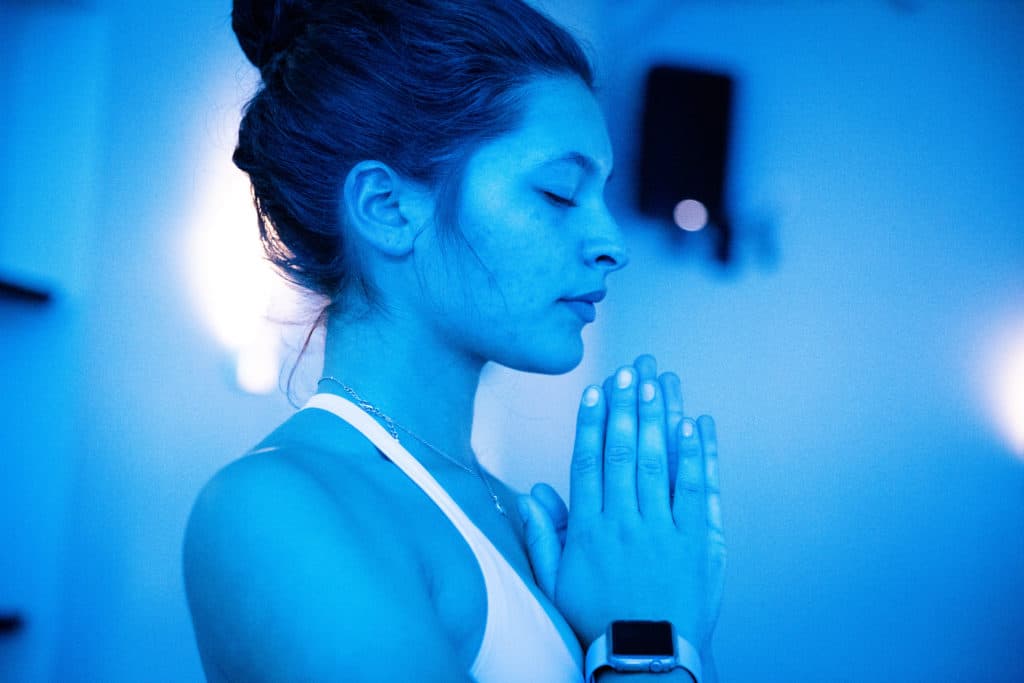Meditation is an ancient tradition where an individual uses a technique – such as mindfulness, or focusing the mind on a particular object, thought, or activity, to train attention and awareness, and achieve a mentally clear and emotionally calm, and stable state.
The practice of meditation has been around for centuries most major religions, including Hinduism, Buddhism, Judaism, Islam, and Christianity, feature meditative methods. There’s also a large group who meditate independently, outside of any religious or spiritual doctrines.
In modern society, we have busy lives. It’s easy to spend any semblance of spare time we have getting lost scrolling through our news feeds or streaming endless True Crime documentaries. However convenient it is, it’s important to practice self-care – physically and mentally.
It’s universally known that getting regular physical exercise comes with a host of mental benefits such as raising serotonin levels, reducing anxiety and depression, and improving self-esteem, but mental exercise is equally important.
Regular mental exercise has a host of physical benefits
Combining both mental and physical fitness into your routine optimizes all of the amazing benefits of exercising.
A recent article from the American Journal of Cardiology shows evidence that meditation improves factors linked to cardiovascular health.
In the report, researchers studied over 61,000 people and found that 10% of the participants said they practiced some form of meditation. After adjusting for age, gender, sleep patterns, and other factors, researchers found that those who meditated had a lower prevalence of high cholesterol, diabetes, stroke, high blood pressure, and coronary artery disease, compared with people who didn’t meditate.
Dr. Darshan Mehta, a medical director of the Benson-Henry Institute for the Mind-Body Medicine at Massachusetts General Hospital states “Many forms of meditation slow down your breathing, which leads to the downstream physiological effects, such as lowered blood pressure.”
Meditation allows a person to evoke the Relaxation Response
The Relaxation Response Refers to the physiologic response that is the opposite of the body’s “fight or flight” stress response. The Relaxation Response slows down a person’s heart rate and breaths – reducing their oxygen consumption Meditative techniques such as hot yoga, prayer, acupuncture, massage, or even knitting can elicit the Relaxation Response.
According to the study, meditation has a significant ability to lower blood pressure – this happens because regularly evoking the Relaxation Response turns on genes that dilate blood vessels and turn off genes associated with inflammation and blood vessel constriction.
Regular meditation also encourages behaviors that promote heart health such as sleeping more and reducing stress. High-stress levels can lead to people developing unhealthy habits such as overeating and binge drinking.
Focused Attention and Open Monitoring
Experts believe that meditation can be categorized into two broad sects: Focused Attention and Open Monitoring. During Focused Attention, the person concentrates on a singular thing: counting, a mantra, or on an object. With Open Monitoring, the person opens their awareness to everything they’re experiencing – including thoughts and feelings – in addition to smells, sounds, and physical sensations.
The practice of Yoga is infused into each modality at TruFusion to achieve maximum physical and mental benefit. At TruFusion, we design our hot yoga classes to focus on both physical and mental prosperity. We teach mindfulness and implement mental wellness techniques in all of our diverse classes – both high and low intensity.
Book your next class to reap all of the benefits.

